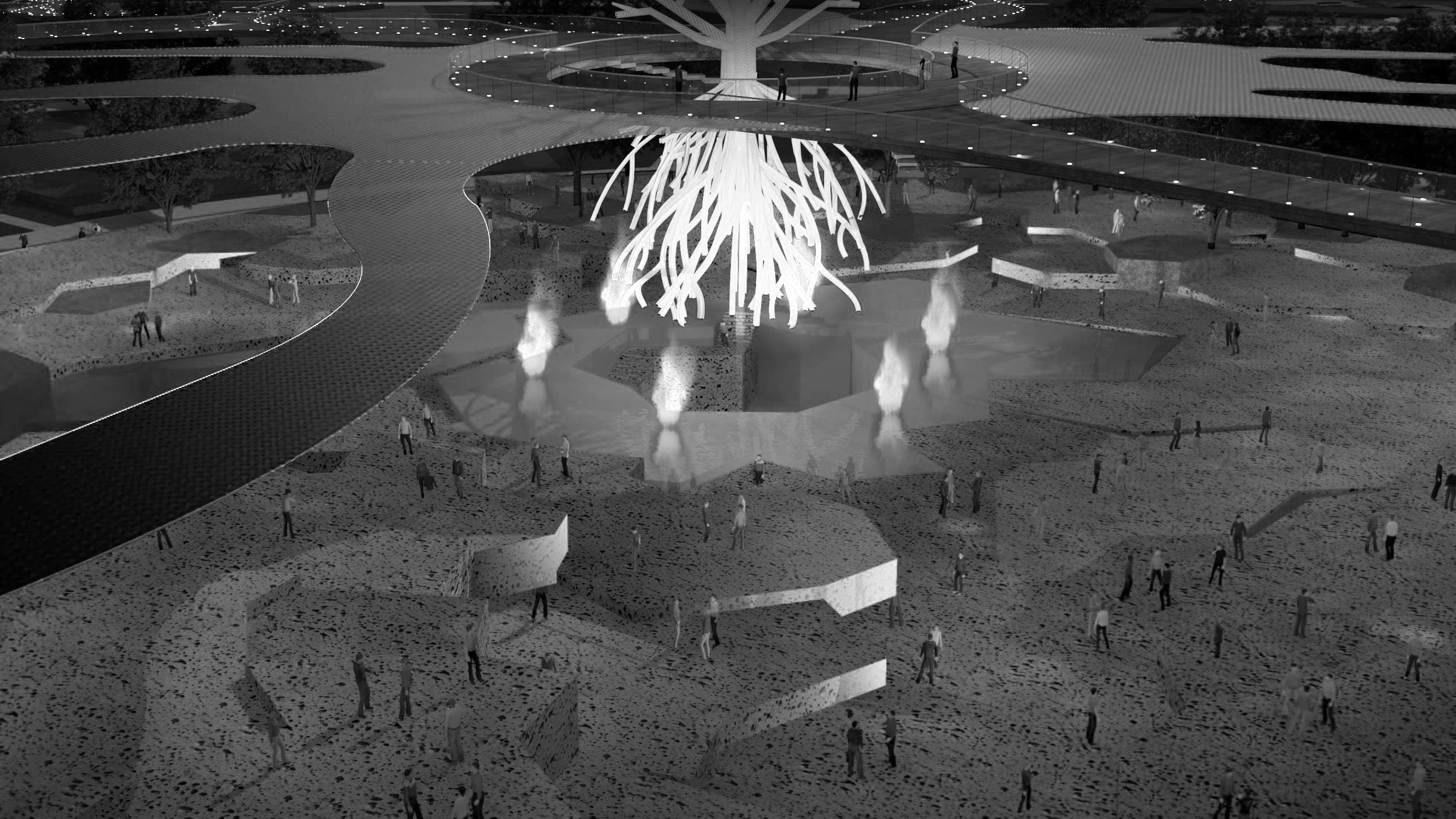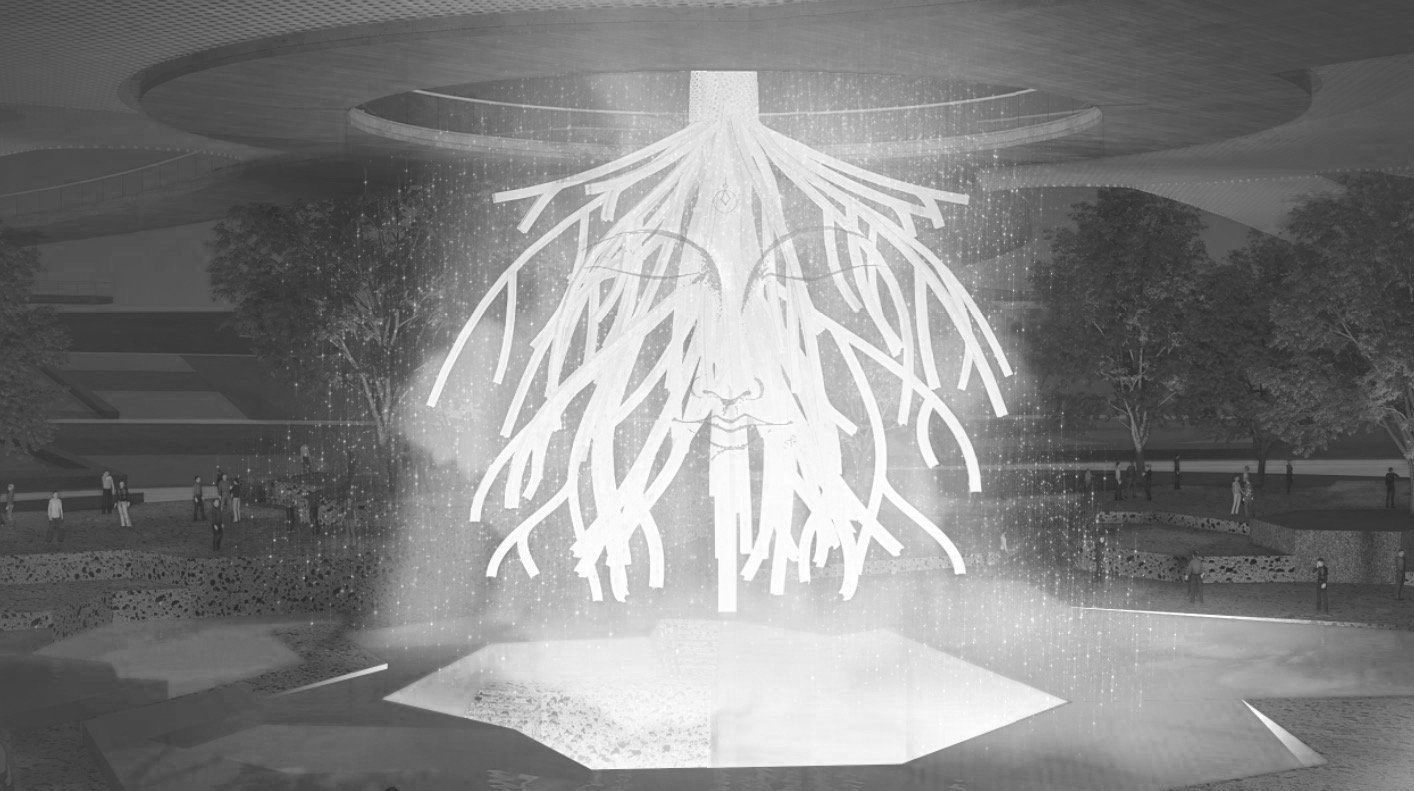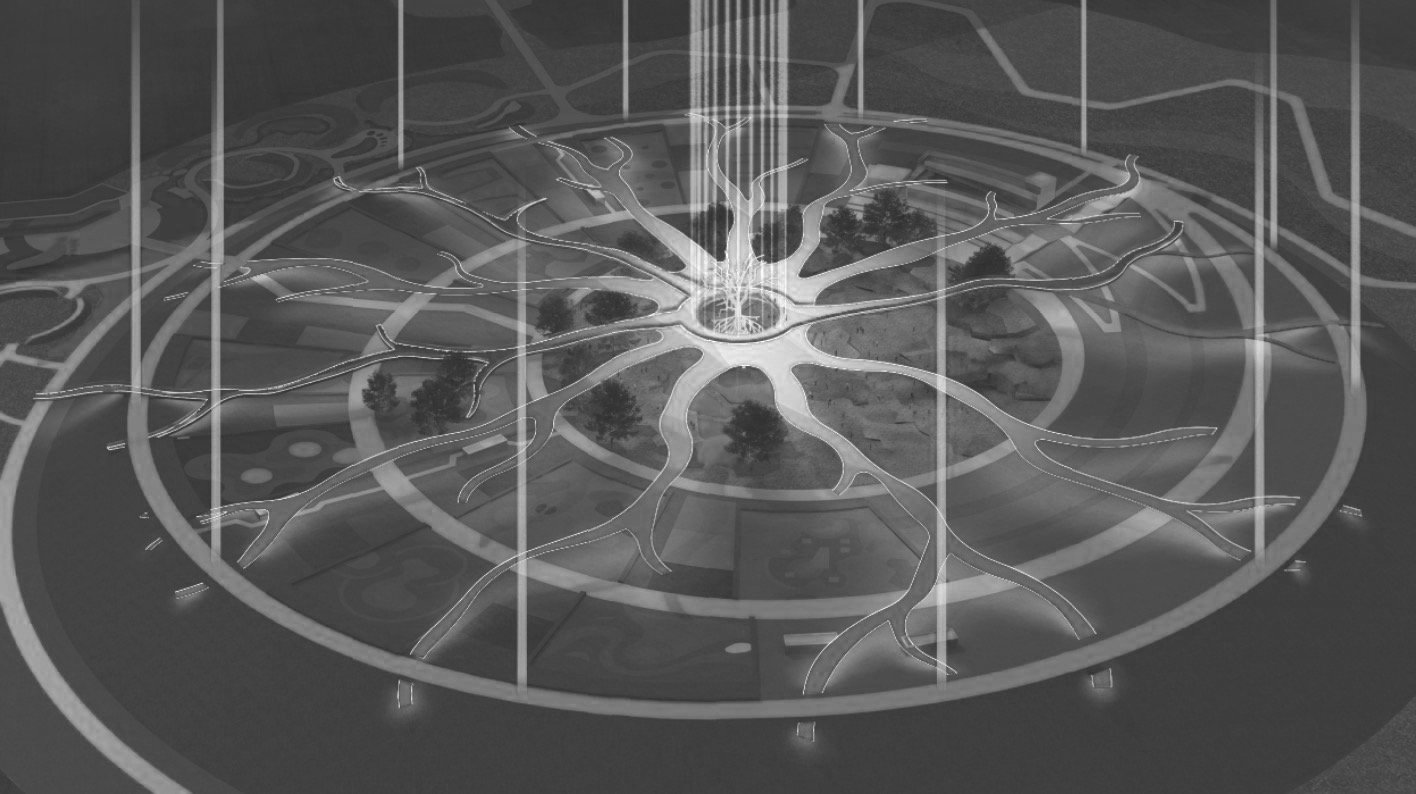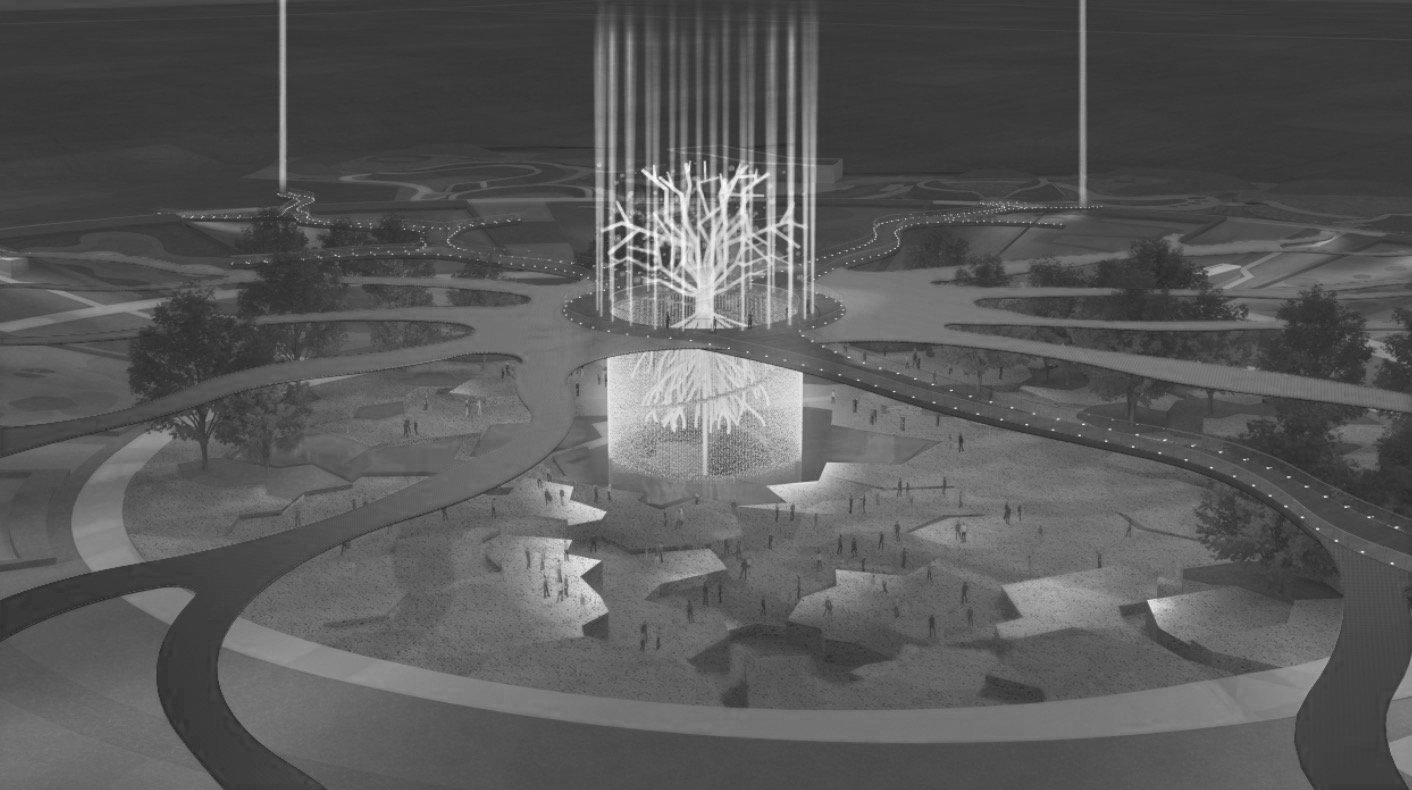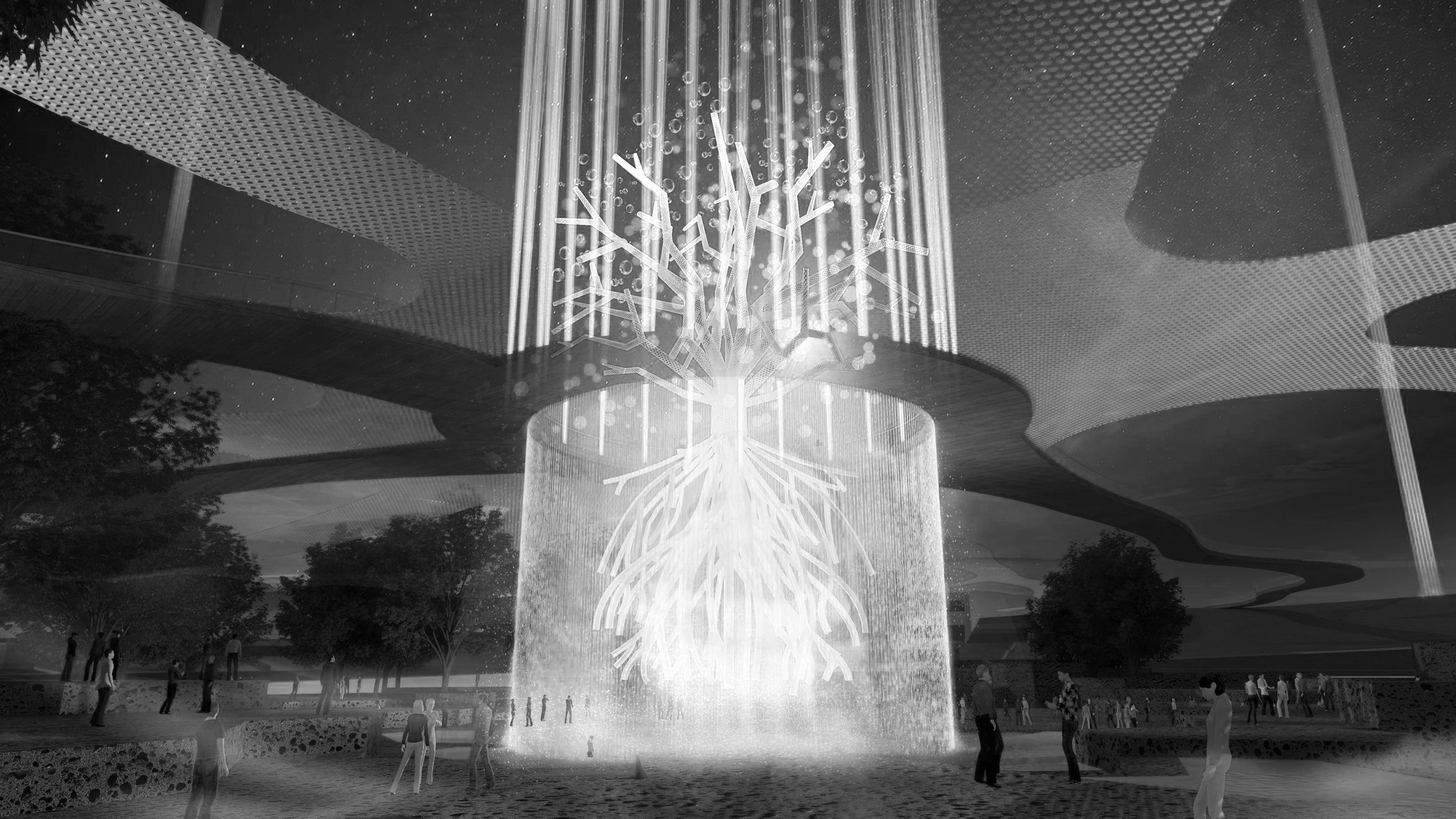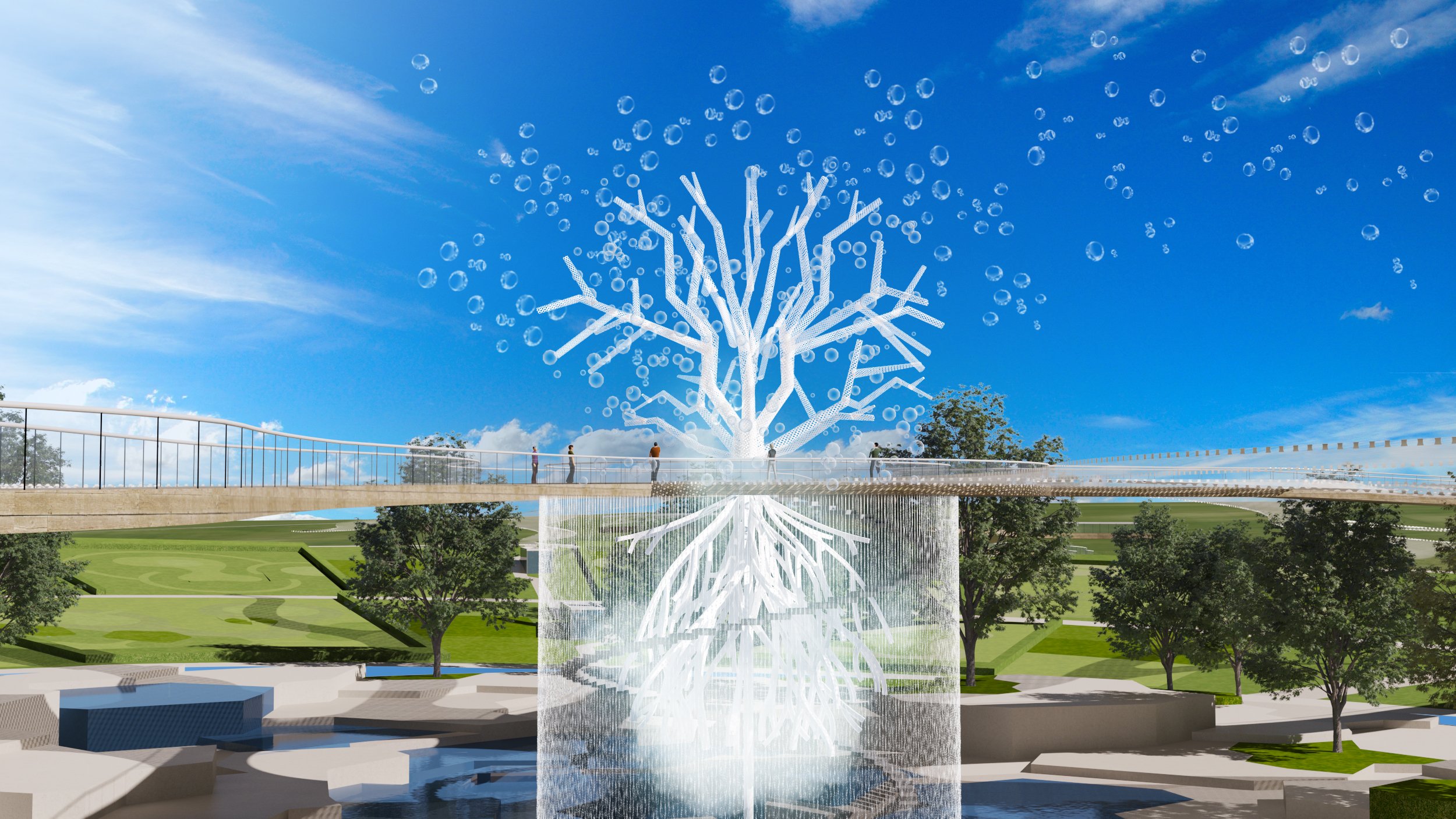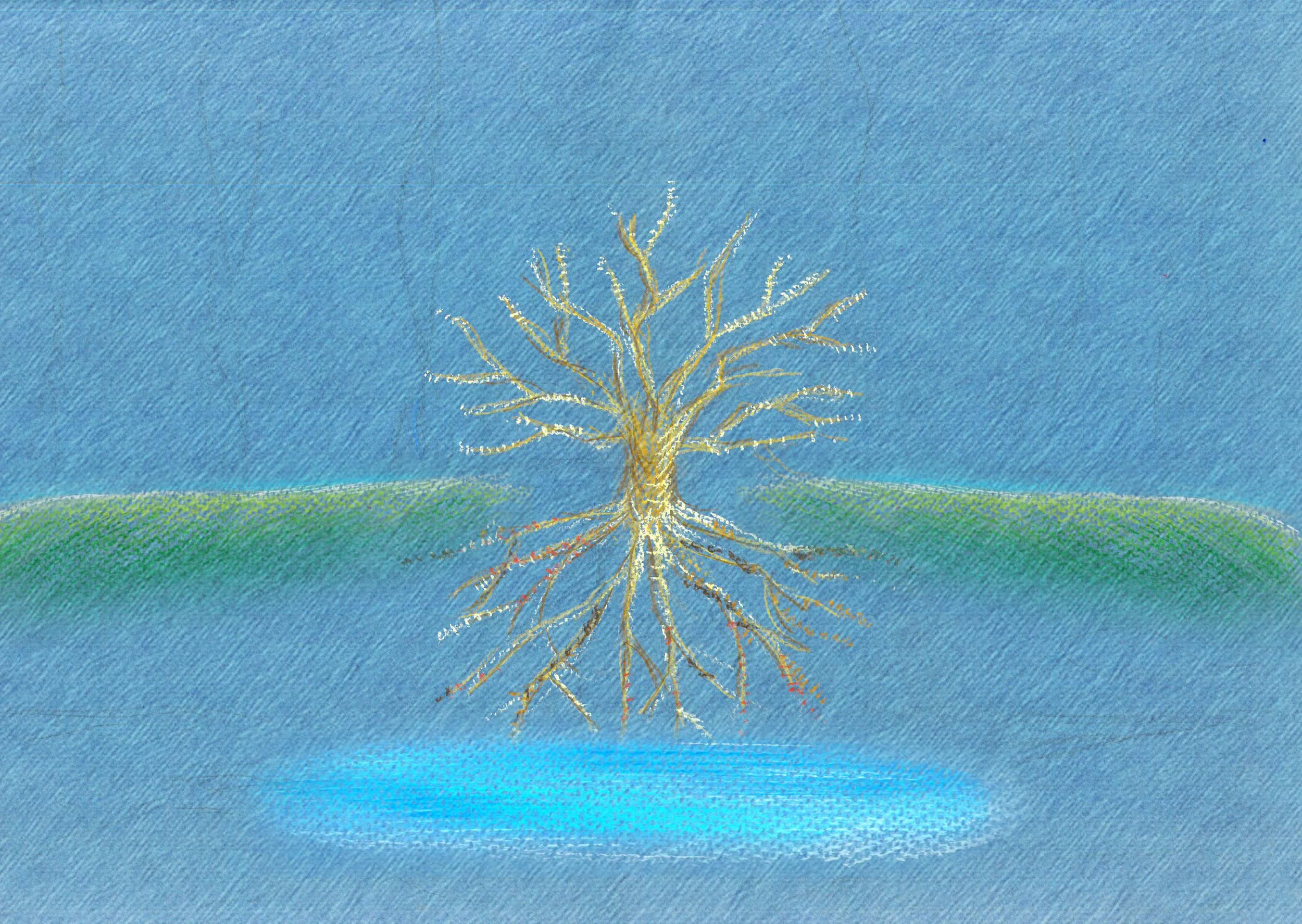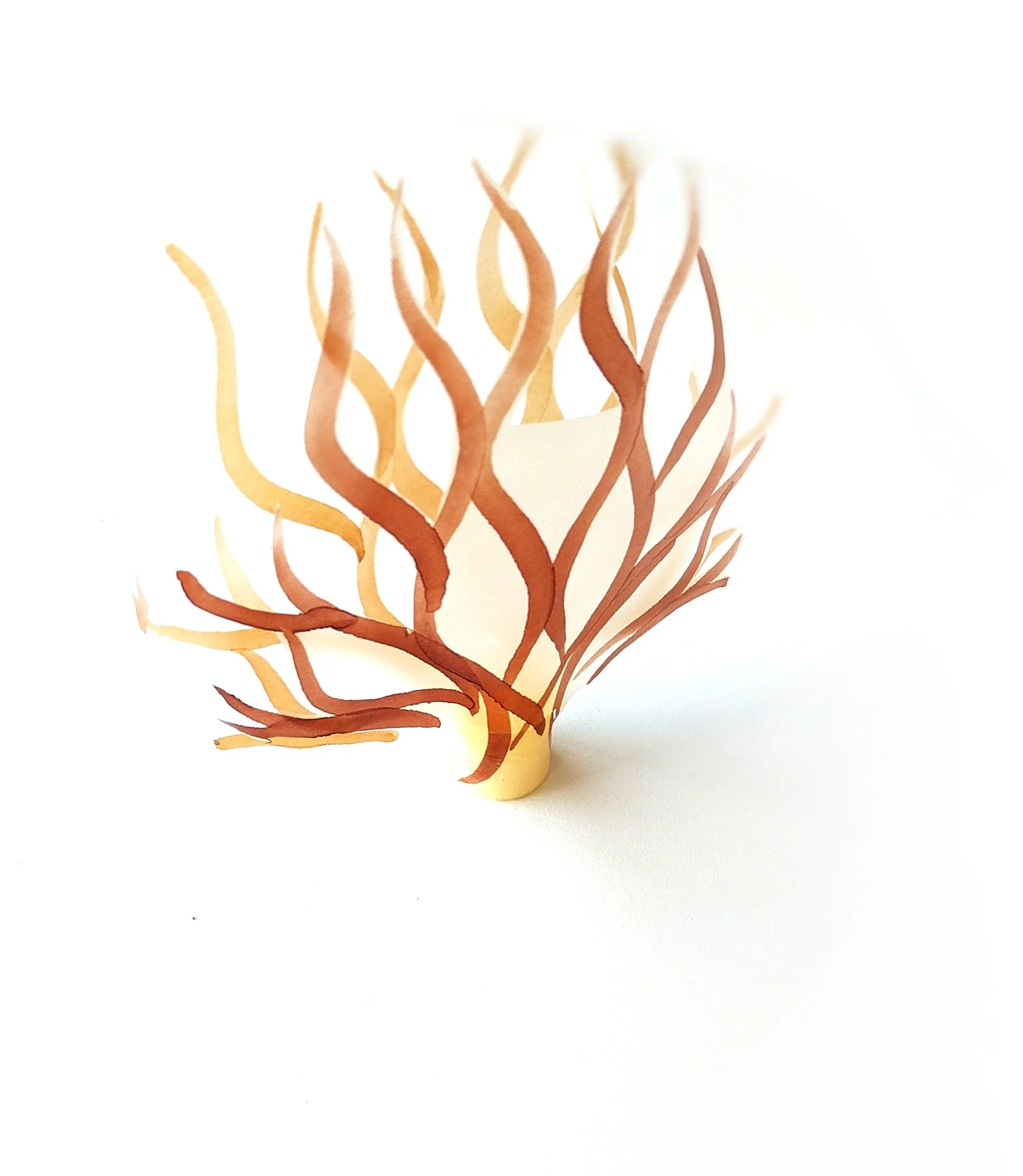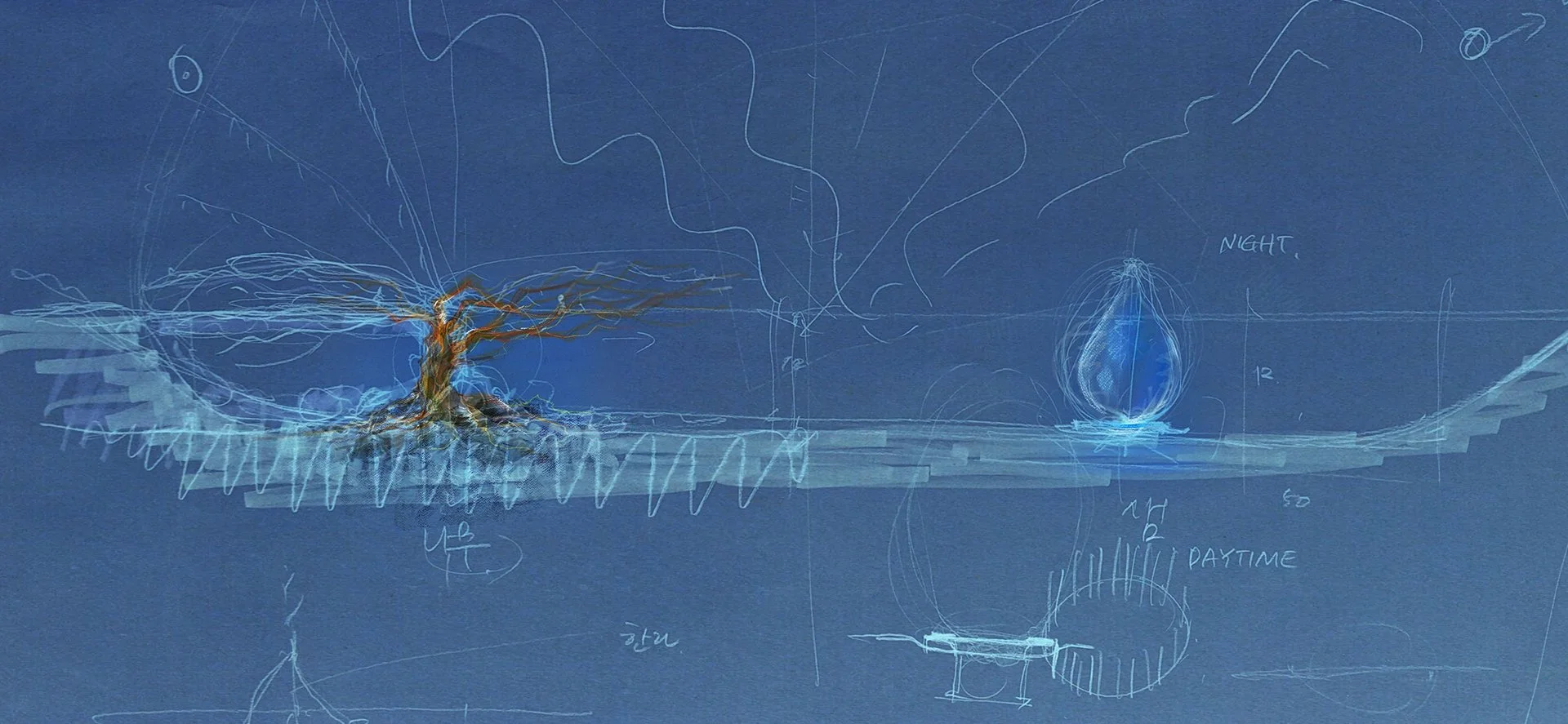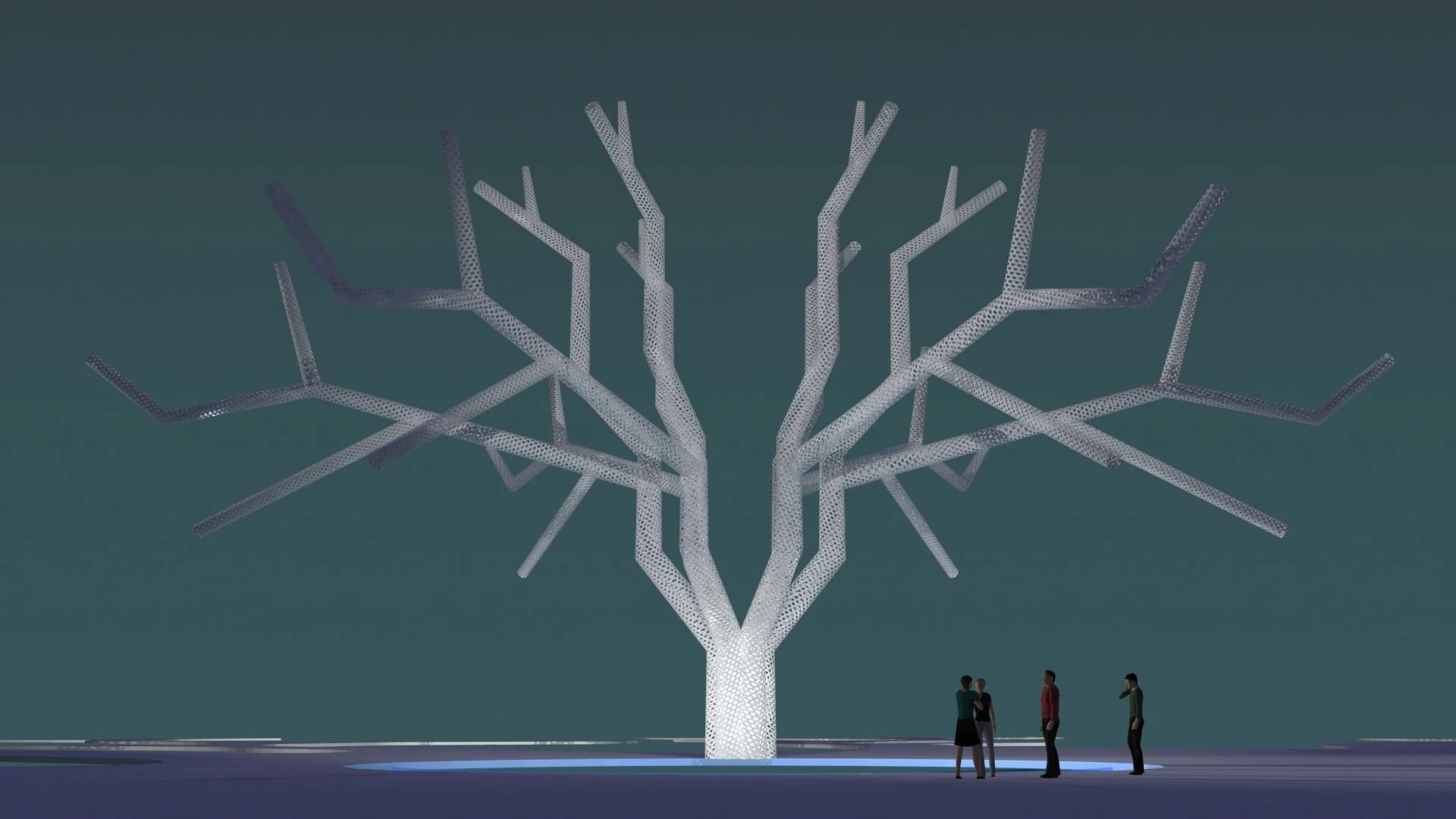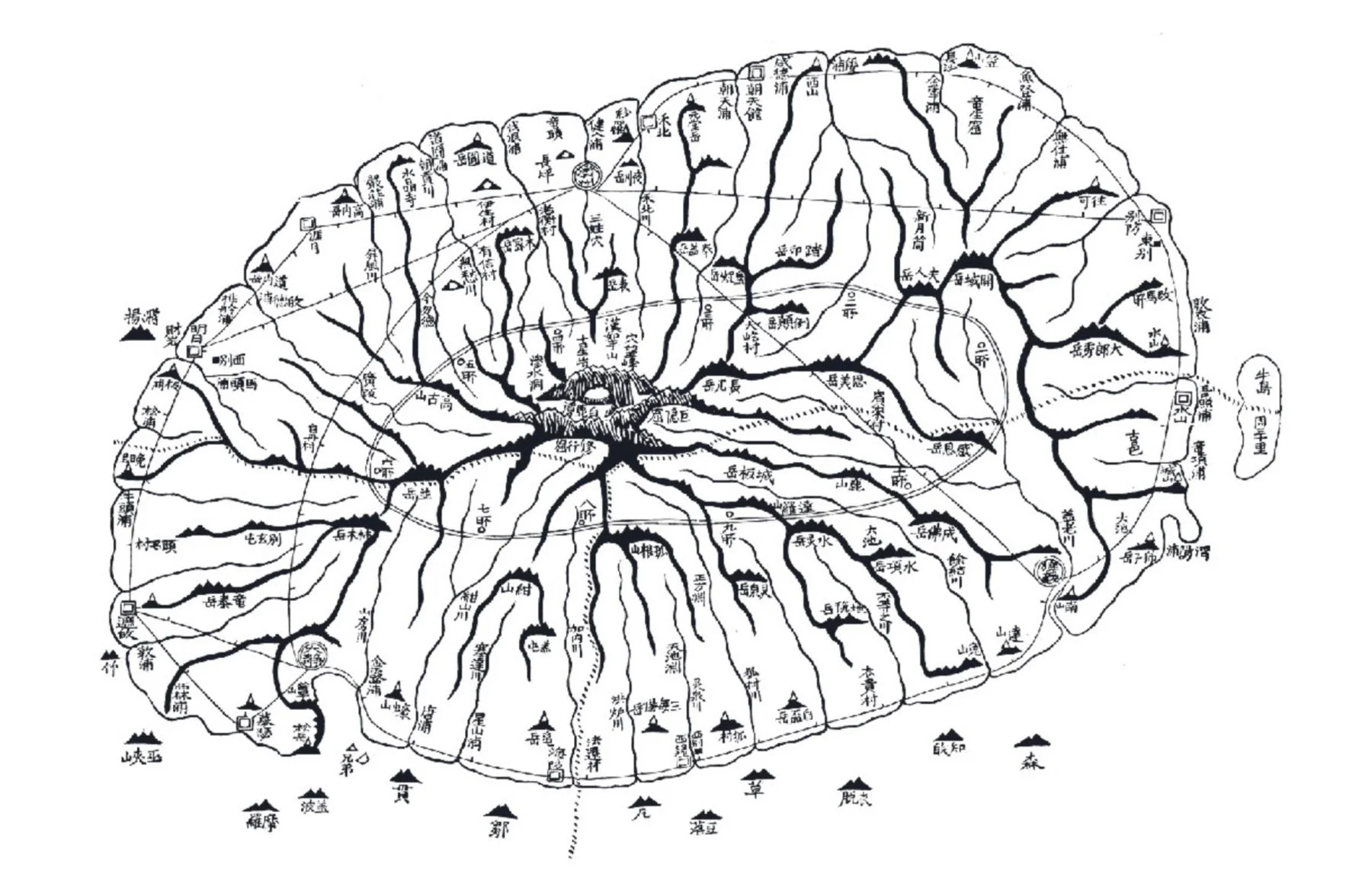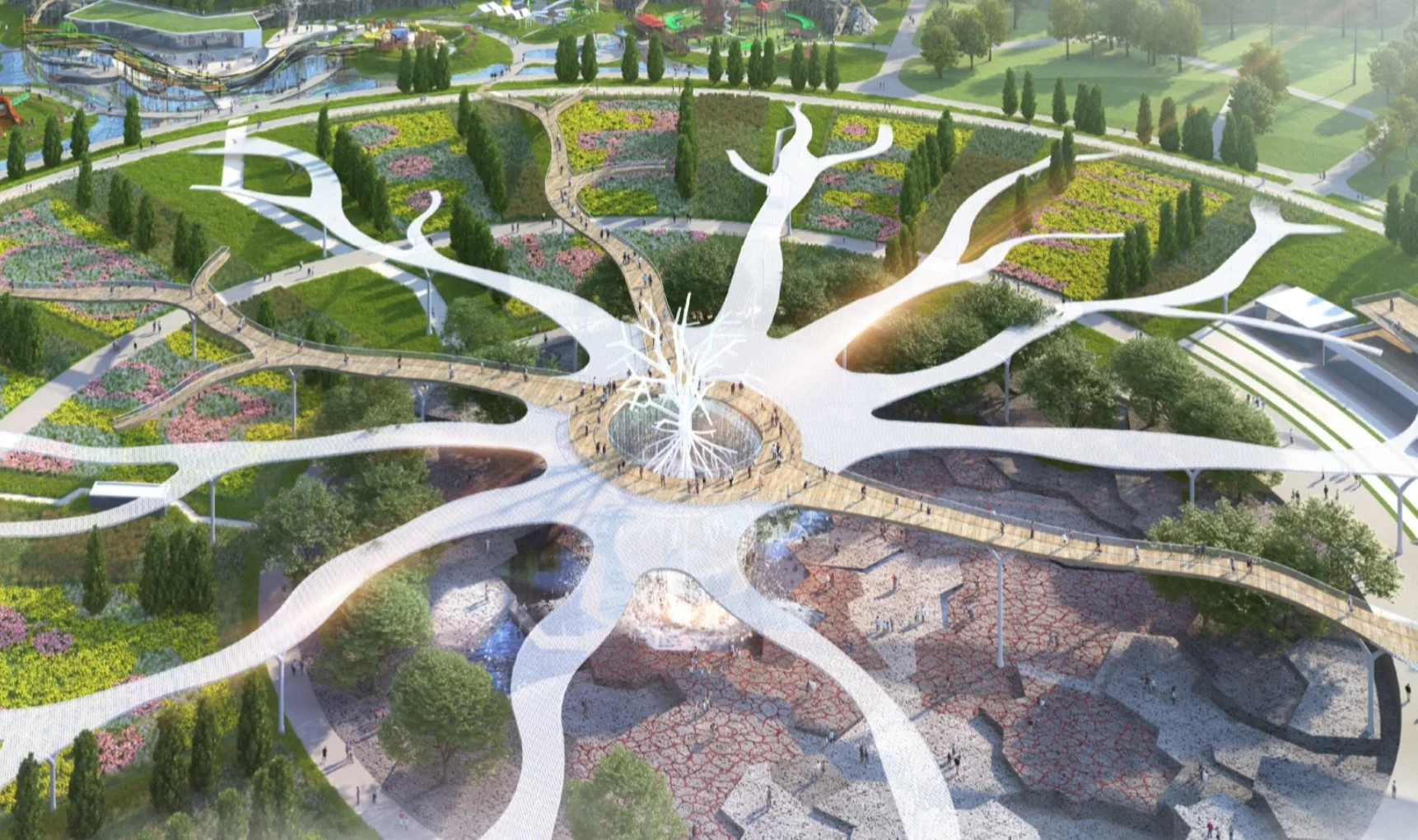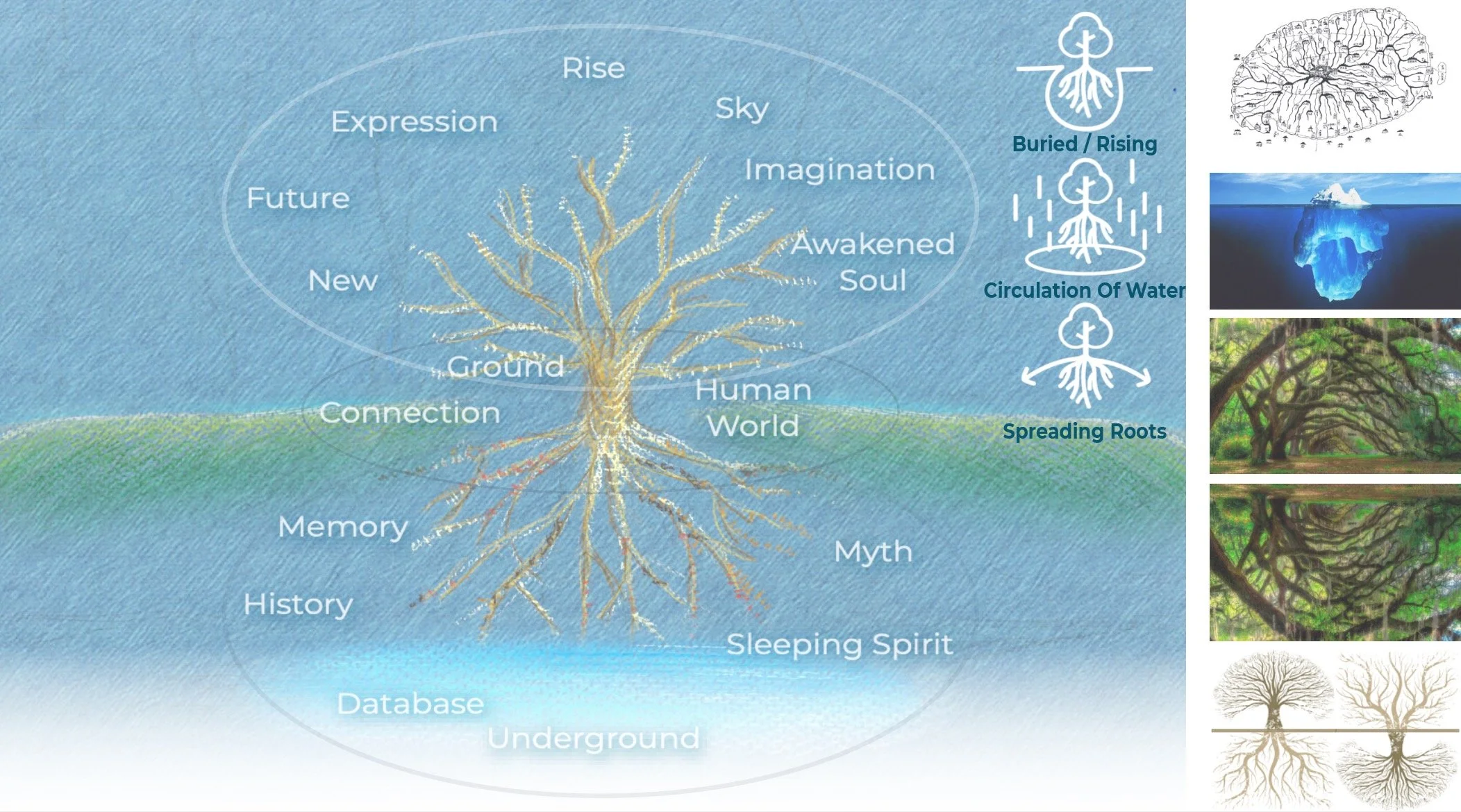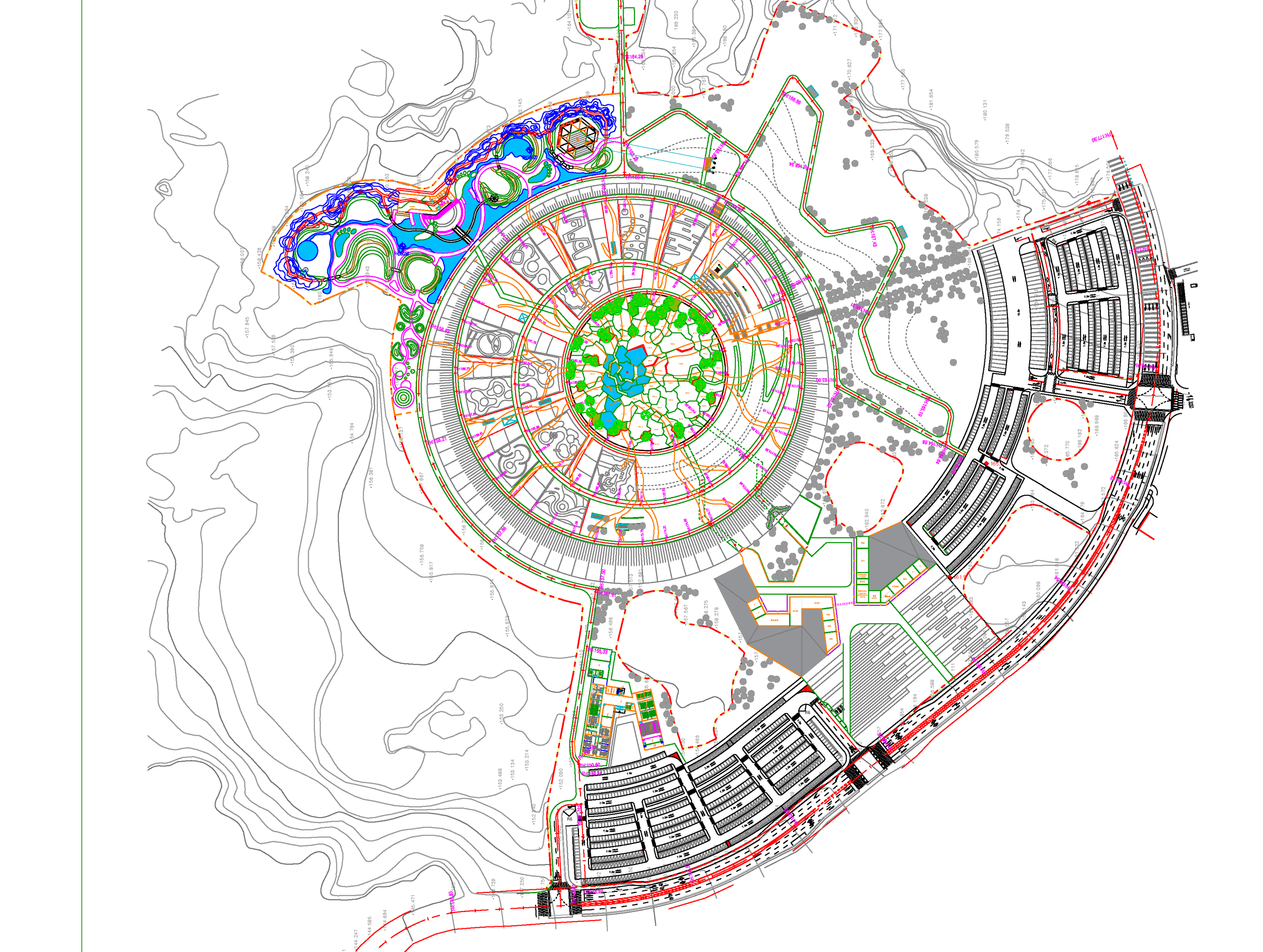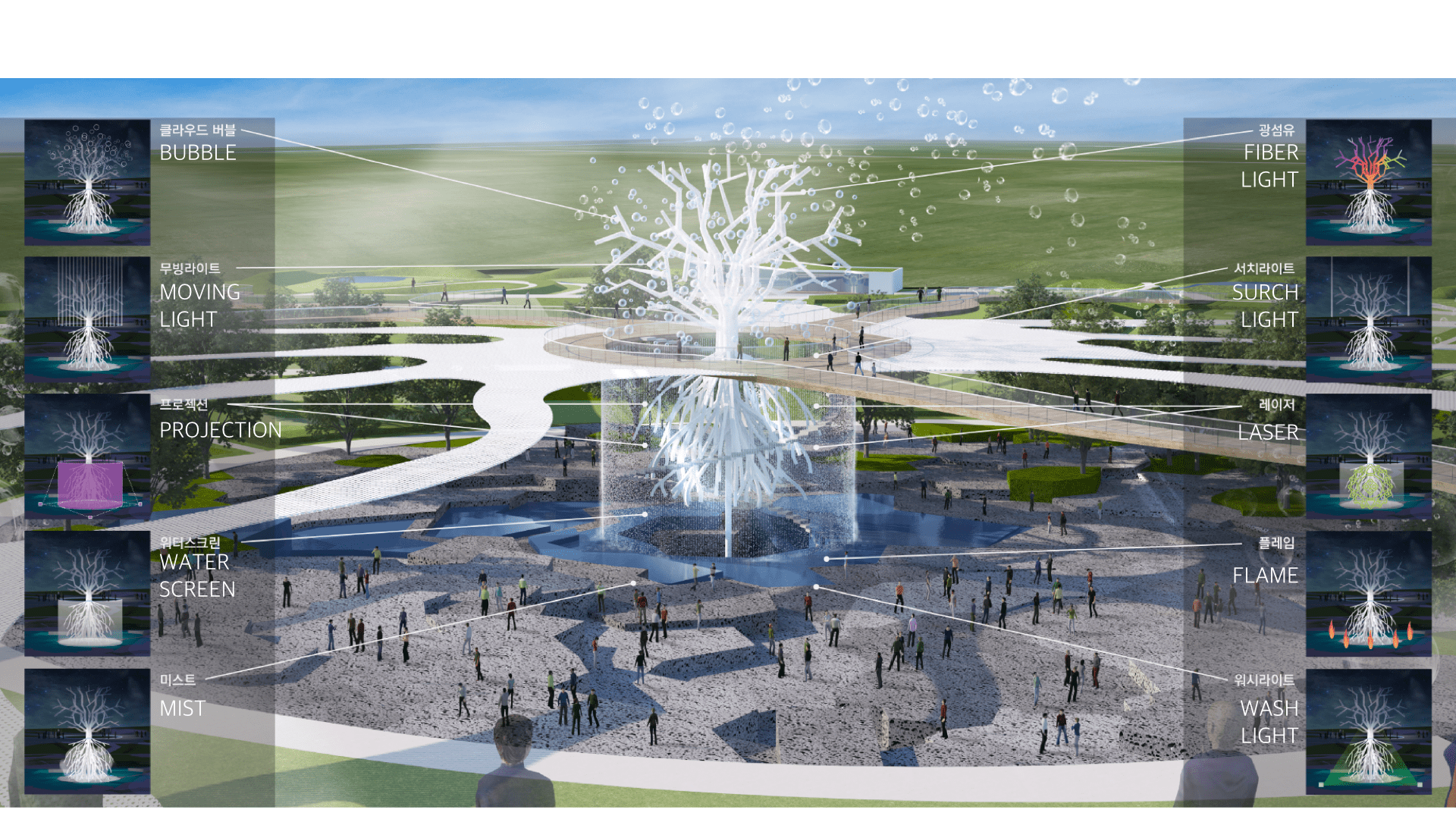Reverse
Jeju, South Korea
2019
INDIVIDUAL CONTRIBUTION
Planning & Concept Design
Architectural Sculpture Design
Simulation & Presentation
System Layout
Creative Contents & Story
Media Design
The Jeju Shinhwa History Park project embodies the mythical narrative of Jeju Island—the "rise myth" that "gods rose from the ground"—through a central structure symbolizing a tree, the gods, and nature. The structure comprises roots (representing the past), pillars (the present), and branches (the future), creating a "soaring" movement that intertwines technical construction with cultural imagination.
Motivated by a deep concern for the reckless development of Jeju's rich natural environment, the Jeju Shinhwa History Park is designed as a natural and cultural park that celebrates the identity and history of Jeju, one of Korea's most iconic tourist destinations.
Jeju Island emerged from the sea through volcanic activity, which created about 360 independent volcanoes known as the "Jeju Oreum," including Mount Halla, the highest mountain in South Korea. This volcanic origin gave rise to the "rise myth" that "gods rose from the ground," which has become the foundation of Jeju's unique culture, legends, and traditions.
The Sacred Tree, the core symbol of this project, is interpreted to represent the three domains of Jeju mythology: roots (past), pillars (present), and branches (future). The 30-meter-tall tree is engineered to move 5 meters down and 5 meters up, with a total travel distance of 10 meters. This dynamic design alludes to the island's origin and the ever-evolving culture and environment of Jeju.
